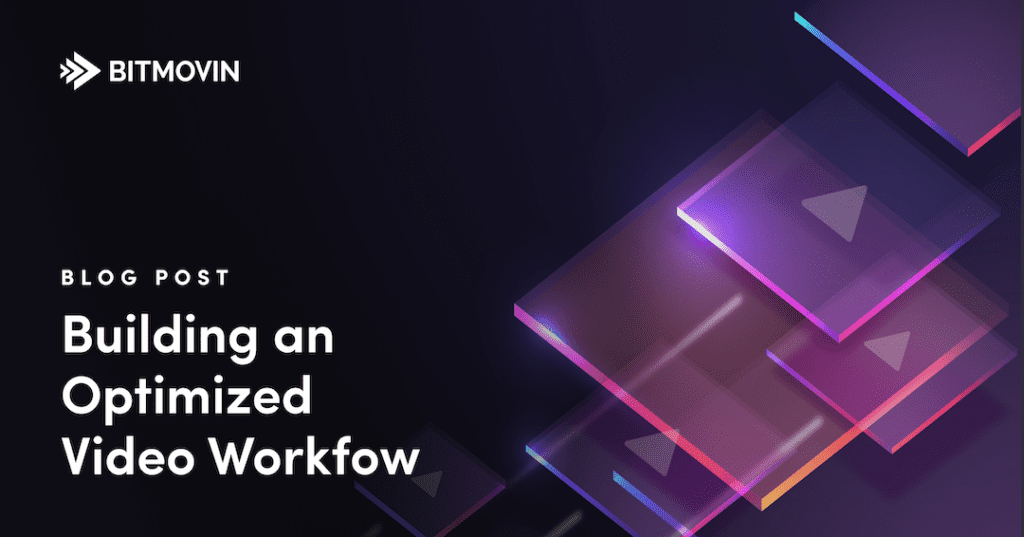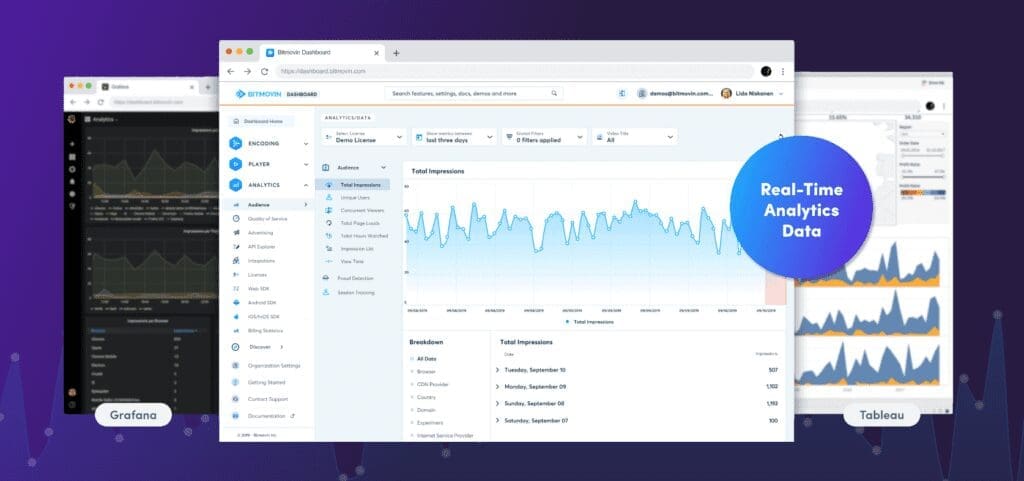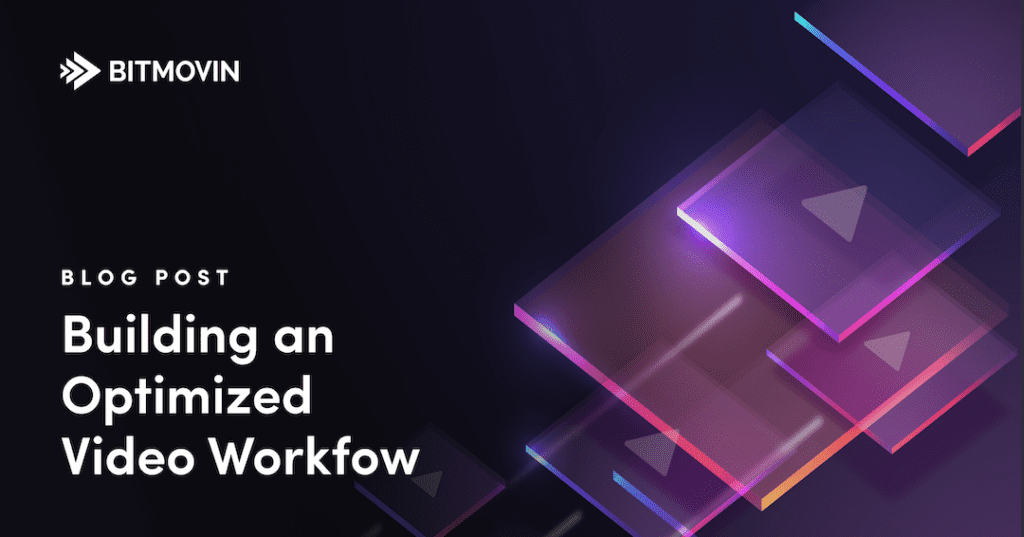
For most people, smartphones and tablets are their default source for information and entertainment, and these days that means streaming video on the go. An increase in film and TV content delivered via the internet, or over-the-top (OTT), has naturally meant an increase in OTT services on the market. If you provide video services like streaming, you know the process of distributing video to devices, managing data, and gathering analytics on viewer behavior can be complex, time-consuming, and sometimes overwhelming. So let’s talk about how to streamline all that into an optimized video workflow, shall we?
In this article, you’ll walk through a high-level overview of an optimized video workflow. You’ll learn how to reduce time at all stages of the process, from creation to publication to data analysis. I’ll discuss uploading raw video files, encoding, DRM, delivery, and playback, all with the goal of improving your processes so you can deliver quality video to your users efficiently.
Raw Video File Uploads
First things first. Before you upload videos to any platform, you need to decide the best format for encoding your master videos. Standardizing your video format now will make it easier to manage them as your library grows.
To ensure good playback quality and efficient uploading, you can record video like MP4, which is compatible with a wide variety of compression standards (codecs), including H.264—efficient and supported by most devices—and HEVC—high quality for high-res video.
Encoding
The process of converting a raw video file into a compatible, compressed, and efficient digital format is called encoding. Getting your video feed onto your platform of choice will require an encoder, which will use a codec to compress your data according to a standard capable of being accepted and decompressed by video services across the web.

In the early days of digital video, files were all raw video, a collection of still photos. For a video recorded at sixty frames per second, you had, well, sixty photos per second. That’s 3600 images per minute of video, resulting in a massive file.
Obviously, the only solution for distribution was to compress these files, but video quality was lost as a result. Software engineers developed video-encoding processes to compress video files without compromising the quality.
There are two types of encoders: hardware and software. A hardware encoder is, as the name suggests, a physical device that captures and processes audio and visual data suitable for streaming. Hardware encoders can be complex, so they’re not often used by beginners. Software encoders are programs you can install in your system. They require less time to set up, and they’re less costly, which means they’re more universally suitable for anyone trying to format video for streaming.
For optimized encoding, go with HEVC/H.265 encoding. It can increase bandwidth efficiency by 50 percent. You can read more about building an encoding video workflow here, and then check out some techniques for optimization here.
DRM
Digital Rights Management (DRM) refers to the standards of protection for copyrighted media. Without tools and technology to enforce DRM (via limited installations, encryption, watermarks, and so on), your video content could be easily copied.

DRM Technology Providers
To achieve acceptable device coverage—and broad delivery of premium content to viewers—you’ll need to use multiple DRM systems. Here are a few of the most popular systems:
Microsoft PlayReady:
- Very popular DRM
- Supports major smart TV alliances
- Supports gaming consoles (Xbox/PlayStation)
- Only supported on Windows phones
- Supports Android
- Not supported by major TV alliances
- Not supported in gaming consoles
- Natively supports Google devices
- Native support to Apple devices & HLS content
- Only (enterprise) DRM to support Safari
- Not supported by major TV alliances
- Not supported in gaming consoles
For more in-depth information about DRM, check out these resources:
Delivery via CDN
Video delivery is perhaps the most critical part of the video workflow. You may have thousands of videos, but if your viewers have trouble playing them, that content is worthless.
A streaming service uses a CDN to publish videos faster to users around the globe. When someone tries to stream a video from a CDN, the server closest to the user either attempts to deliver it because it already has the media files cached, or it will send a request to the next closest server that does.
Most services offer pay-as-you-go fees, and so do CDNs. They’re normally billed as per usage. If you have your own server, you can connect it to CDN providers if you expect major traffic. For further optimization, you can use decentralized CDN architecture to lower the chances of rebuffering.
Delivering video through the internet in such a way that it loads quickly, doesn’t need to buffer, and plays in the highest possible quality is a complex, resource-intensive, and time-consuming challenge. Services like Bitmovin can help you set up a fast, modern streaming experience in just a few steps.
Playback
The ability to play a video within a website or in an application is an absolute necessity for anyone that uses video as part of their business. On top of that, the video playback should be a universal experience across platforms—users should be able to access the video as smoothly and easily on their phone as they do their desktop PC or television.
According to Bitmovin’s Video Developer report, 65 percent of people say that video start-up time is the most important video performance metric. This yields the issue that if a video wasn’t delivered to the user fast enough, viewers will rapidly disengage. Research from Akamai shows that most viewers will wait about two seconds for video playback, but for each second of delay after that, 5.8 percent of viewers abandon the video.

So what’s behind video playback issues in the first place? Larger files typically take longer to download, so to ensure fast playback, your service can opt to preload the video onto the device. That way, when your user clicks Play, playback will be relatively immediate.
HTML offers preload attribute options for video on a webpage: auto, metadata, and none.
``` preload = auto | metadata | none ```
When your video is delivered with `preload=”auto”`, the browser downloads the entire video file and stores it locally. This often results in a large performance improvement; the video is available locally on the device, and network interference can’t slow it down.
However, you should only use `preload=”auto”` if there’s a high chance the video will be viewed. If the video is simply living on your webpage, and it’s downloaded each time, this can add a large data penalty to your mobile users, not to mention increase your server or CDN costs for delivering the entire video to all of your users every time the page is opened.
When the video player knows the optimal video stream for playback and the stream is lower than the available network speed, the video will play with no issues.
With Bitmovin, you have complete control over your video live streams, with easy-to-use services and APIs that run easily on any cloud or hardware.
Video Analytics
So your videos are playing smoothly on your website, but do you know which ones are being viewed, where they’re being viewed, or if viewers are even watching the entire video? Businesses that analyze viewing data are able to gauge audience interest, the effectiveness of marketing efforts, and produce content that will keep viewers coming back for more.

You can use video analytics solutions like Bitmovin for custom solutions.
Complete end-to-end video workflow
So that’s an end-to-end video workflow. It starts with ensuring you’re working with the best files, then moves through choosing the right codecs, handling DRM intelligently, deciding how you want to deliver your video to consumers and how you want it to actually play, and then finally ends with analyzing the data from each of those steps so you can improve your product and service over time.
Sound like a lot? If you’d like to offload some of that workflow, contact Bitmovin, for integrated developer tools to ensure a smooth experience for OTT video providers and their viewers.



